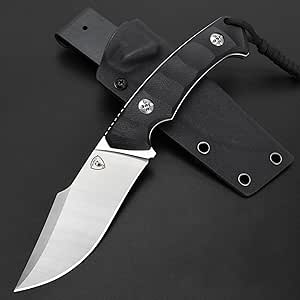Let’s be honest: a sharp hunting knife is the difference between a successful hunt and a frustrating one. A dull blade is dangerous, inefficient, and can ruin a perfectly good animal. But investing in a top-tier knife sharpener isn’t always feasible, especially when you’re juggling other hunting expenses. So, the question naturally arises: can cheap sharpeners damage your hunting knife?
The Perils of Poor Sharpening: More Than Just a Dull Blade

The short answer is yes, cheap sharpeners *can* damage your hunting knife. While a slightly dull blade is annoying, significant damage can compromise the knife’s integrity, reducing its lifespan and potentially making it unsafe to use. This damage isn’t always immediately obvious. It can manifest in various subtle but significant ways:
- Micro-chipping: Cheap sharpeners often lack the precision and control of high-quality models. This can lead to microscopic chips along the blade’s edge, weakening it and making it prone to breaking under stress.
- Uneven Sharpening: Inconsistent sharpening creates a jagged, uneven edge. This results in poor cutting performance and increased effort during skinning or butchering. It’s also more likely to snag and tear the hide, spoiling your trophy.
- Overheating: Some cheap sharpeners lack proper heat dissipation mechanisms. Overheating the blade can weaken the steel, affecting its hardness and overall durability. This is especially problematic for high-carbon steel blades commonly used in hunting knives.
- Incorrect Angle: Maintaining the correct sharpening angle is crucial for a sharp, durable edge. Cheap sharpeners might lack guides or angle indicators, leading to inconsistent angles and, consequently, a sub-par edge. Incorrect angles can also increase the risk of chipping.
- Material Degradation: The abrasive materials used in inexpensive sharpeners are often inferior in quality and consistency. These materials can leave behind microscopic scratches or even gouges on the blade’s surface, gradually wearing it down over time.
Understanding the Importance of Sharpening Angle and Pressure
The angle at which you sharpen your knife is paramount. Different knives and steels require different angles. A too-steep angle results in a weak, easily dulled edge, while too shallow an angle can weaken and chip the blade. Cheap sharpeners often lack the precise angle guides found in higher-quality models, increasing the risk of error.
Pressure is equally important. Too much pressure can quickly damage your blade, leading to overheating and chipping. Cheap sharpeners often lack the mechanisms to control pressure, making it easy to apply excessive force unknowingly. A light, even stroke is key – a skill easily developed with practice and the right tool.
Types of Cheap Sharpeners and Their Potential Downsides

Let’s examine some common types of cheap sharpeners and their potential drawbacks:
- Pull-through sharpeners: These are inexpensive and convenient but lack precision and often use coarse abrasives that can quickly damage a knife’s edge.
- Electric sharpeners (low-end): While offering speed, cheaper electric sharpeners may use low-quality abrasive wheels that are aggressive and prone to inconsistencies. They might also overheat the blade if used for extended periods.
- Hand-held sharpening stones (low-grit): Inexpensive stones often have coarse grits and lack evenness, resulting in an uneven sharpening. This makes achieving and maintaining a consistent angle far more challenging.
Investing in the Right Tool: Long-term Savings
While the initial cost of a quality knife sharpener might seem high, it’s a worthwhile investment. A good sharpener will preserve the integrity of your hunting knife, extending its lifespan considerably and saving you money in the long run. This translates to fewer replacements, less frustration, and ultimately, a safer, more efficient hunting experience.
Alternatives to Expensive Sharpeners: Learning Basic Sharpening Skills

If purchasing a high-end sharpener is not an immediate option, consider learning the basics of hand sharpening using a high-quality sharpening stone. While it requires practice and patience, this method gives you more control over the sharpening angle and pressure, significantly reducing the risk of damage. There are countless online resources and videos that teach this skill effectively.
Conclusion: Protecting Your Investment

Your hunting knife is a valuable tool that demands respect and proper care. While budget constraints are understandable, compromising on the quality of your sharpening tools can have serious repercussions. By understanding the potential damage caused by cheap sharpeners and investing in either a high-quality sharpener or learning proper hand-sharpening techniques, you’ll ensure your hunting knife remains sharp, safe, and ready for years of reliable service in the field.